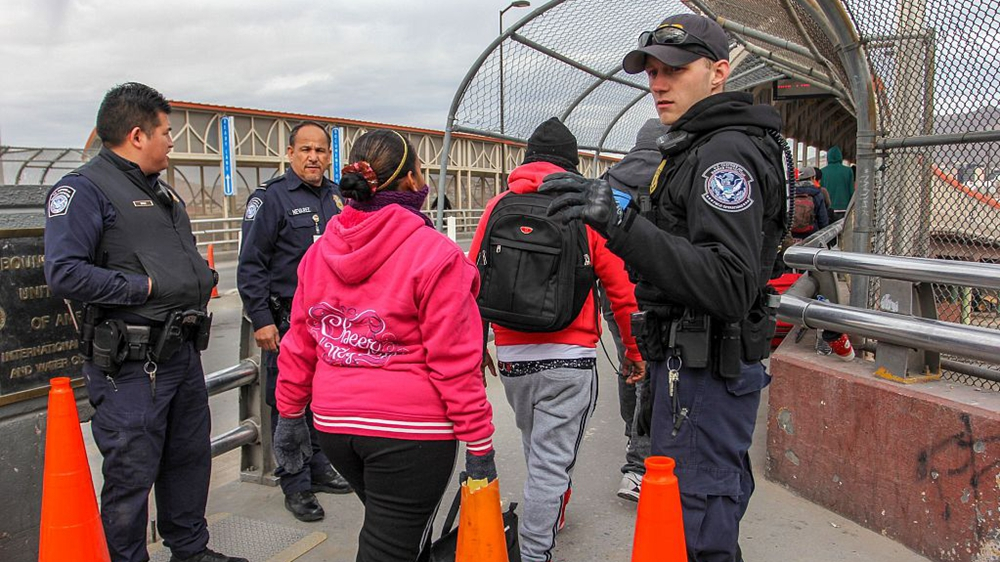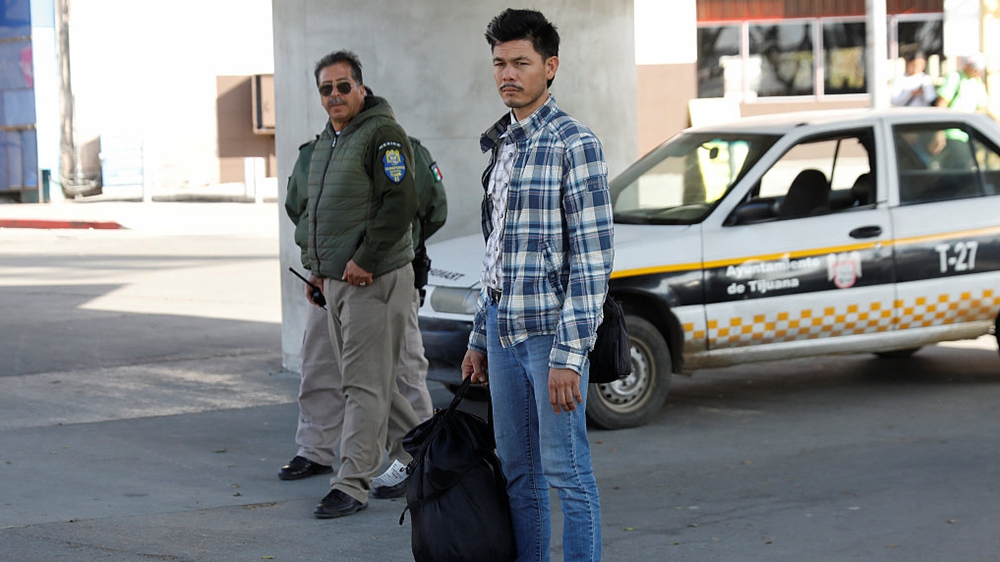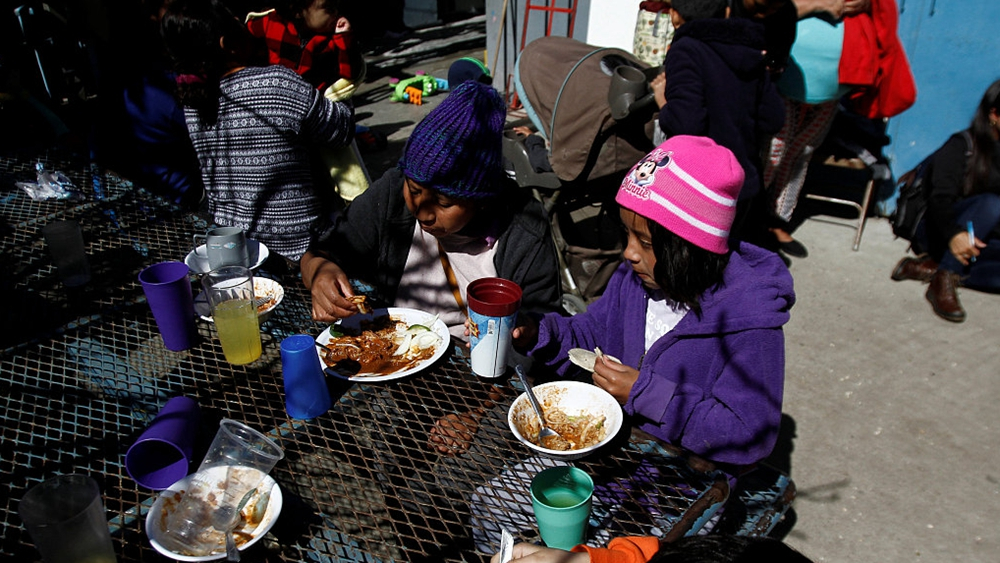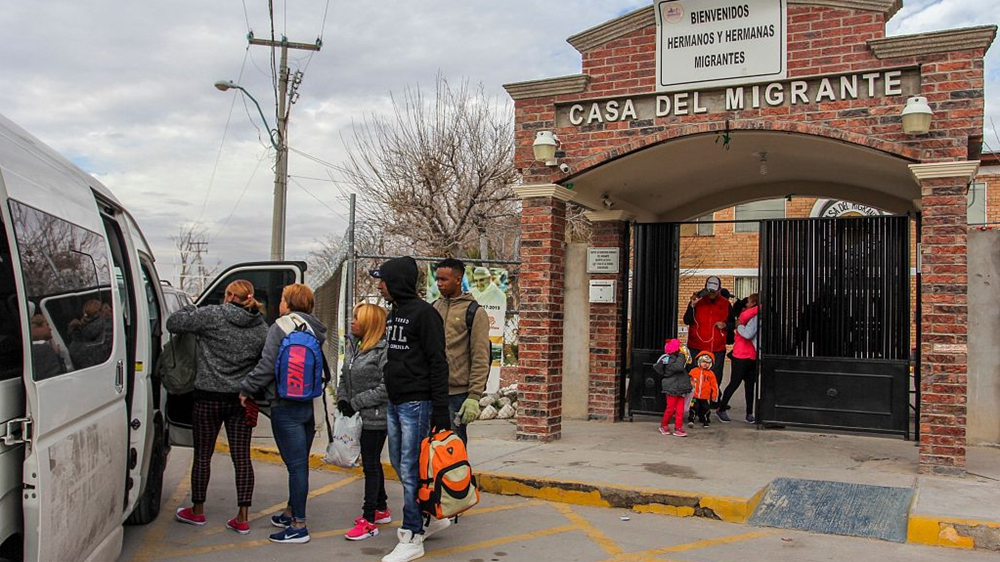
World
10:54, 02-Mar-2019
Mexico frets over U.S. plans to take divisive asylum policy to new cities
CGTN

The United States is aiming to ramp up in coming weeks a program to send Central American asylum seekers to Mexico to await U.S. court dates, an experimental policy that Mexican officials and migrant shelters say risks overwhelming an underfunded system.
In late January, the U.S. began sending Central American migrants, who crossed at the Tijuana-San Diego border, back to Mexico to wait as their asylum requests were processed, according to a program called Migrant Protection Protocols, or MPP.
On Friday, a U.S. official said several government agencies met this week to discuss implementing the policy in more border cities. Rights groups are simultaneously suing the U.S. government to try to close down the program, which plaintiffs says breaks the law and endangers refugees.
The U.S. official, who spoke on condition of anonymity, said the program would likely be expanded in the next few weeks, and that one option was the El Paso-Ciudad Juarez border, which saw a surge in migrant arrivals in February.

A Central American asylum seeker stands in the street after being sent back to Mexico by the U.S. at the Chaparral border crossing in Tijuana, January 30, 2019. /VCG Photo
A Central American asylum seeker stands in the street after being sent back to Mexico by the U.S. at the Chaparral border crossing in Tijuana, January 30, 2019. /VCG Photo
Asylum claims from Central America have been the fastest growing segment of immigration across the southern border and the policy is U.S. President Donald Trump's most radical effort yet to dissuade more migrants from using asylum to reach the U.S..
One of the first people to be sent back was Salvadoran fruit seller Yanira Esmeralda Chavez, who waited in line in Tijuana for five weeks to ask for asylum at the U.S. border. She said she fled her home when men threatened to kill her son unless she gave them part of her earnings and the 11-year-old boy joined their vicious street gang.
"I have nowhere to go and no money for me or for my children. I'm afraid of being in Mexico, the crime here is like back home," Chavez said at the Madre Asunta shelter, where she is waiting with three of her children for an immigration hearing in San Diego on March 27.
Critics of the existing asylum system say that many immigrants end up waiting for years for court dates in the United States, and that forcing them to stay in Mexico could help cut down on the number of applications.
But Chavez and others waiting in Mexico said they would have left their homes regardless of the new policy, to protect their families.

Central American migrants, waiting in Mexico while their asylum request is processed under a new U.S. policy, eat at a shelter in Tijuana, February 19, 2019. /VCG Photo
Central American migrants, waiting in Mexico while their asylum request is processed under a new U.S. policy, eat at a shelter in Tijuana, February 19, 2019. /VCG Photo
The head of Mexico's National Immigration Institute, Tonatiuh Guillen, warned Mexico's border cities would struggle to look after vulnerable asylum seekers for long periods.
"If it increases there will be serious difficulties, more than anything for the shelters, because the border towns are already saturated," said Guillen.
The Mexican government said it had received around 150 returned asylum seekers so far. "Double or triple this number will put us in a predicament," Guillen said.
On February 19, the government of Ciudad Juarez said that U.S. border officials had told it that an average of 10 asylum seekers per day would be sent back to the city within two weeks, and would be expected to remain there for three to four months.
So far, the pilot Tijuana project has not led to a drop off in asylum cases.

Cuban and Central American migrants leave the Casa del Migrante shelter in Ciudad Juarez, Chihuahua State, to head to the border to request political asylum in the U.S., January 9, 2019. /VCG Photo
Cuban and Central American migrants leave the Casa del Migrante shelter in Ciudad Juarez, Chihuahua State, to head to the border to request political asylum in the U.S., January 9, 2019. /VCG Photo
"More people than expected are arriving, we weren't expecting the returnees. They are going to saturate the shelters," said Salome Lima of the Madre Asunta shelter.
She said about 700 deported Mexicans already arrive each week in the city, many of them staying for short periods in the non-profit shelters before moving on. Central Americans waiting for asylum hearings will need housing for longer periods.
Lima said she expected Madre Asunta would offer shelter to the returnees only up to their first immigration hearing.
After that, she said, they would have to find their own means, since the government is not considering the problems the shelters will have to deal with.
Source(s): Reuters

SITEMAP
Copyright © 2018 CGTN. Beijing ICP prepared NO.16065310-3
Copyright © 2018 CGTN. Beijing ICP prepared NO.16065310-3